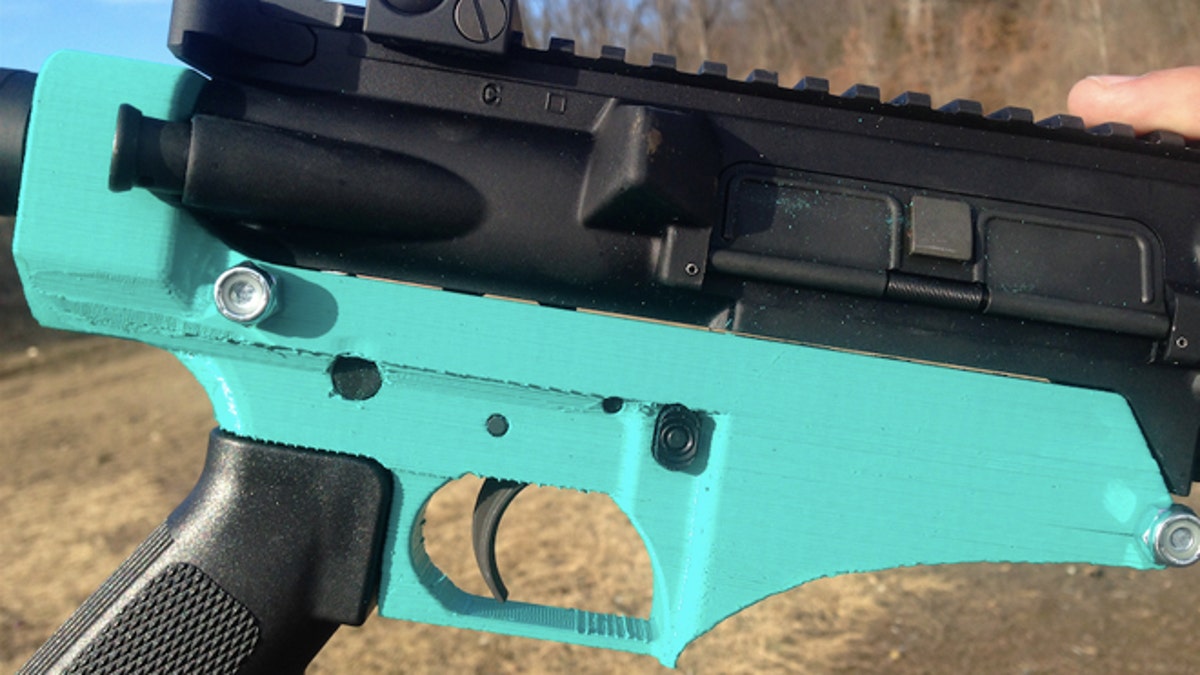
A 3D printing enthusiast recently created a lower receiver for a high caliber Colt CM901 rifle. (printedfirearm.com)
A group of gunsmiths just 3D printed a bigger, better caliber rifle.
PrintedFirearm.com , a website devoted to 3D printing of guns, announced that one of its members successfully developed a lower receiver for a Colt CM901 rifle. The receiver for the CM901—which is considered to be a much stronger brother of the popular AR-15 assault rifle—was crafted on a XYZ Da Vinci printer, which normally costs around $500 - considered cheap in the 3D printer world. While they were not the first to 3D print a lower receiver, it seems as if Printed Firearm has taken an evolutionary step.
“This is the FIRST EVER 3d Printed AR-10 (CM901/LE901) lower receiver by JT,” reads a blog post on PrintedFirearm.com. “OH YES WE DID!!!!!!! Yes people its pure awesome sauce and it has been tested, fired with little to no issues.”
The CM901 has a similar design to the AR-15 but can fire a heavier and more powerful 7.62 millimeter round, which results in higher range and stopping power. The standard NATO rifle cartridge has a 7.62 mm diameter and a 51 mm case length.
“Is it as strong as metal, no, is it as strong as wood, probably not, is it strong enough to work, yes and it has proven just that.”
The rifle is also a modular weapons system, which allows for multiple modifications, so it is also capable of firing lighter 5.56-millimeter rounds as well.
Printed Firearm posted a five-second GIF of the lower receiver in action at a firing range. Like most 3D printed objects, the part is made from a plastic-like filament so it is not clear how many shots could be fired before it breaks or becomes damaged.
“This receiver is durable enough to work,” The Author of Printed Firearm’s blog, who asked that his name be withheld, told FoxNews.com. “The reality is the lower receiver in an AR style weapon does not need to be that strong.

Schematics for the lower receiver. (printedfirearm.com)
“Is it as strong as metal, no, is it as strong as wood, probably not, is it strong enough to work, yes and it has proven just that.”
The blogger adds that the creator of the part claims to have fired over 100 rounds of ammunition without any issues of visible wear and tear.
Blueprints for parts like a lower receiver for the AR-15, have been available on the web to download for several years but this is the first instance where it has been drafted with an affordable printer and has raised the question among some in the community that an affordable rifle — from barrel to stock — will eventually be as simple as hitting the print button.

(printedfirearm.com)
Others say it will be a long while before that is a reality.
“It’s good for the narrative for the improvements in 3D printing,” Cody Wilson of Defense Distributed, another group that made what was considered the first working 3D printed handgun back in 2013, told FoxNews.Com “But it’s going to be a long time before a rifle can be made on an affordable 3D printer.”
Makeshift gunsmiths have focused mostly on printing lower receivers because it is the only part of the rifle that has federal regulations. Every other part, such as the barrel or the handgrip can be purchased without any sort of permit.
Under current law, there are no federal restrictions on making a gun for personal use - so long as it is under the parameters of both the Gun Control Act and the National Firearms Act.
Officials for the Bureau of Alcohol,Tobacco,Firearms and Explosives told FoxNews.com that they are monitoring developments in 3D printing technology.
“[The] ATF routinely collaborates with the firearms industry and law enforcement to monitor new technologies and current manufacturing trends that could potentially impact the safety of the public,” Dannette Seward, a spokeswoman for the ATF said in a written statement.
Printed Firearm says that the reaction of this latest lower receiver and the low cost will increase the number of hobbyists but would do little in terms of advancing technology.
“At $500 it is something a hobbyist like myself can potentially own,” The blogger said. “The reality is most of us involved in this area of technology are doing it simply to understand what is possible.
“If one wanted to create a stronger, more reliable, item 3D printing would not likely be the best tool to use.”




















